Artful Breakdown: The Secret Lair of Rebecca Guay
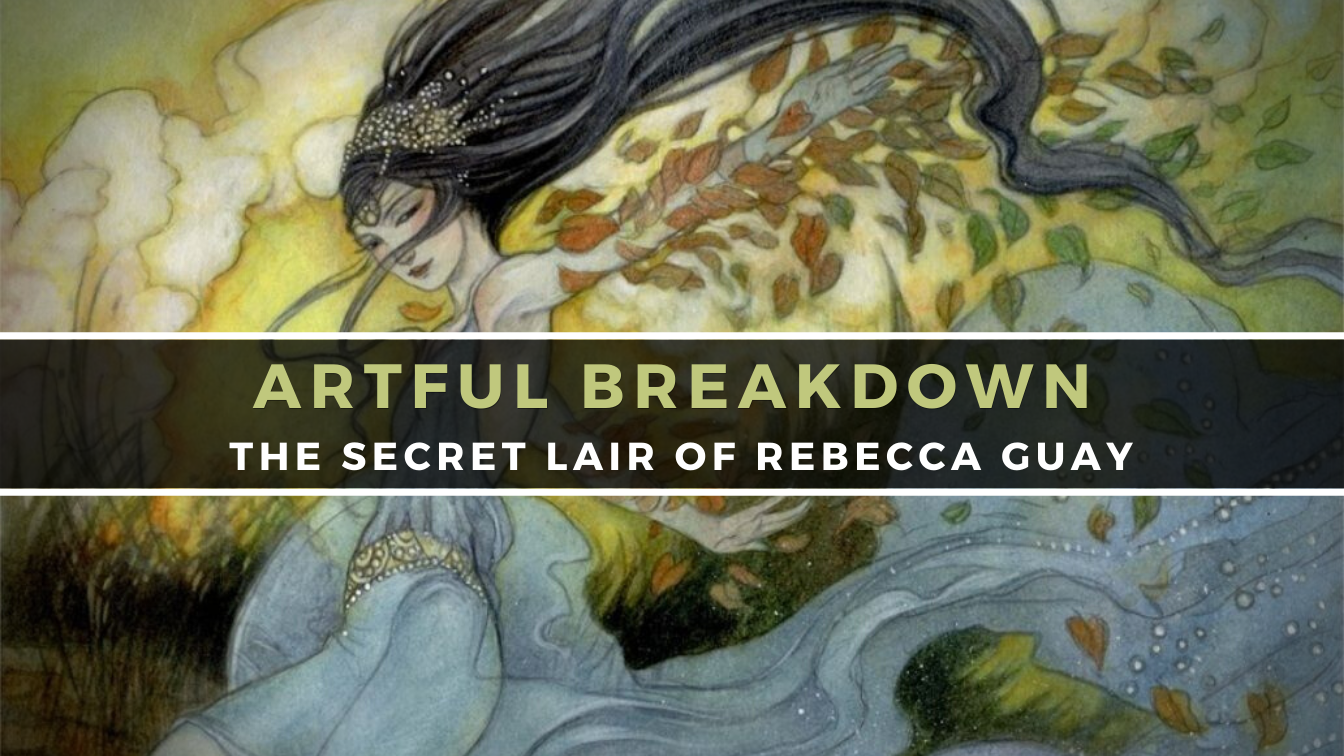
Channel by Rebecca Guay
Welcome back to The Artful Breakdown, the series that takes a look at the art of Magic: the Gathering cards and analyzes the strategies, tricks, techniques, and decisions that go into making it. I'm Aaron, a fantasy illustrator myself and it's my pleasure to be your guide to the interesting elements, homages and stylistic flair that you might miss at card size.
Each article I take a look at some aspect of Magic's art; usually related to composition or some other technical element of an image's creation and talk about what makes it work, because art isn't something that just happens miraculously. It's a process of decision-making done by a craftsperson to communicate an idea.
Few offerings from Wizards of the Coast exemplify that more strongly than the Artist Series. In these Secret Lairs, the company allows a single artist to illustrate a small collection of cards and stamp them with a personal style. With that in mind, today's topic is focused on pieces from the new Secret Lair Superdrop for spring 2023, so let's dive into the lair of a true master with Rebecca Guay's artist series!
Rebecca Guay
One of the most recognizable names for long-term players, Guay began working on Magic in 1996 and would appear regularly for the next 15 years illustrating 162 cards. Her watercolor style is distinct and unique within the game, and while websites and interviews often cite the influence of renaissance masters on her lush worlds of nymphs, goddesses, and fairies, I also always saw touches of Arthur Rackham, specifically in the drawing style and whimsy of her work. (To be fair I think you can definitely see more of the renaissance influence of in examples such as these).
The two share a similar storybook feel, though Guay's work always felt softer and more delicate in its treatment of its subjects as well as being more vibrant in her usage of color.
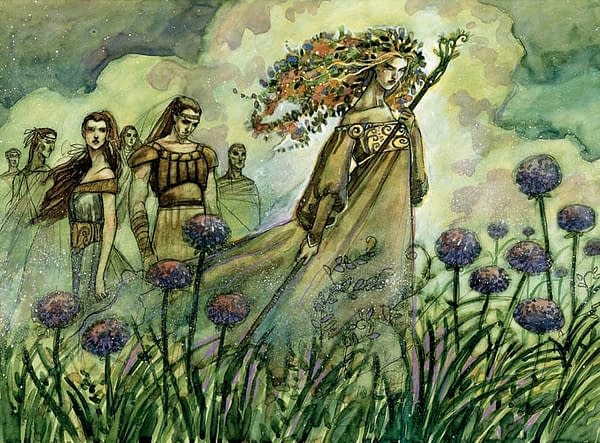
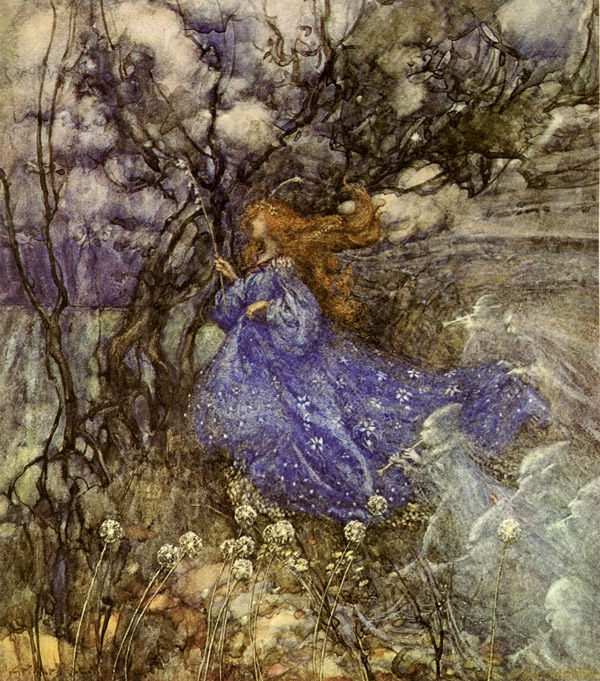
The Cards
Cleansing Nova

Since leaving the game, Guay has continued to define and refine her inimitable style. Her personal work plays with themes of the romantic, sensual, and even occasionally erotic. Cleansing Nova is probably the most akin to her classic oeuvre and even feels like a reference to Gustav Klimt's "The Kiss." Yet there's a clear change in medium here. While she clearly values traditional painting heavily, it seems in her personal and gallery work she's taken to using oil paint more as opposed to watercolors these days.
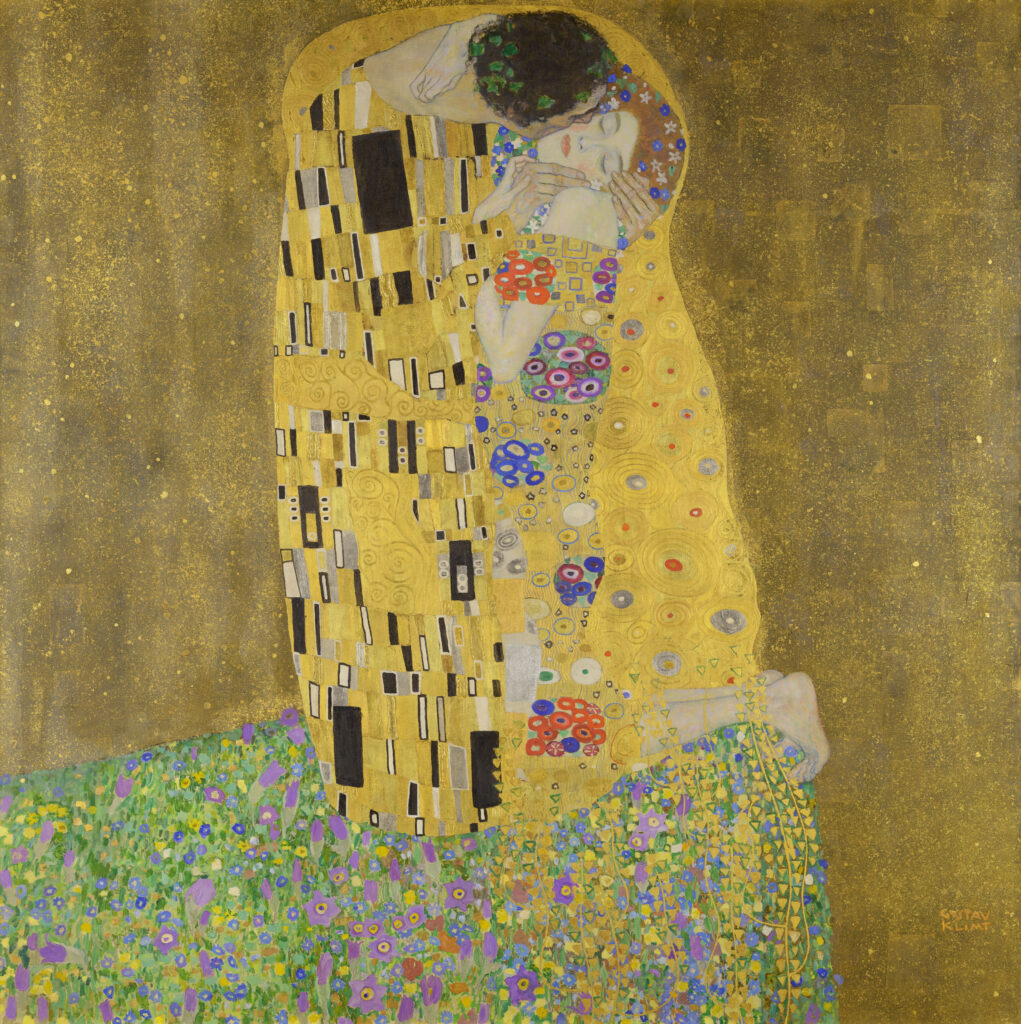
The piece carries with it a level of sensual romance that's rare and beautiful to get on a Magic card. It exemplifies the softer, sweet feminine style that made her work stand out so strongly as a counterpoint to the generally masculine aesthetic of Magic. Owing to that masculine nature of the game and fantasy art as a whole, Guay has even noted she was surprised folks took to it so strongly, but I'd argue Magic fans have always had wide-ranging artistic tastes. That desire for variation and the edge of soft and sweet Guay provides is a large part of why fans rejoice whenever her art appears.
In this piece, her reframing also gives us a counterpoint to the general combat focus of the game and instead interprets the cleansing as something of the world falling away leaving only the fire and bliss of love as described in the flavor text poetry written by Guay herself.
Muddle the Mixture and Serra the Benevolent

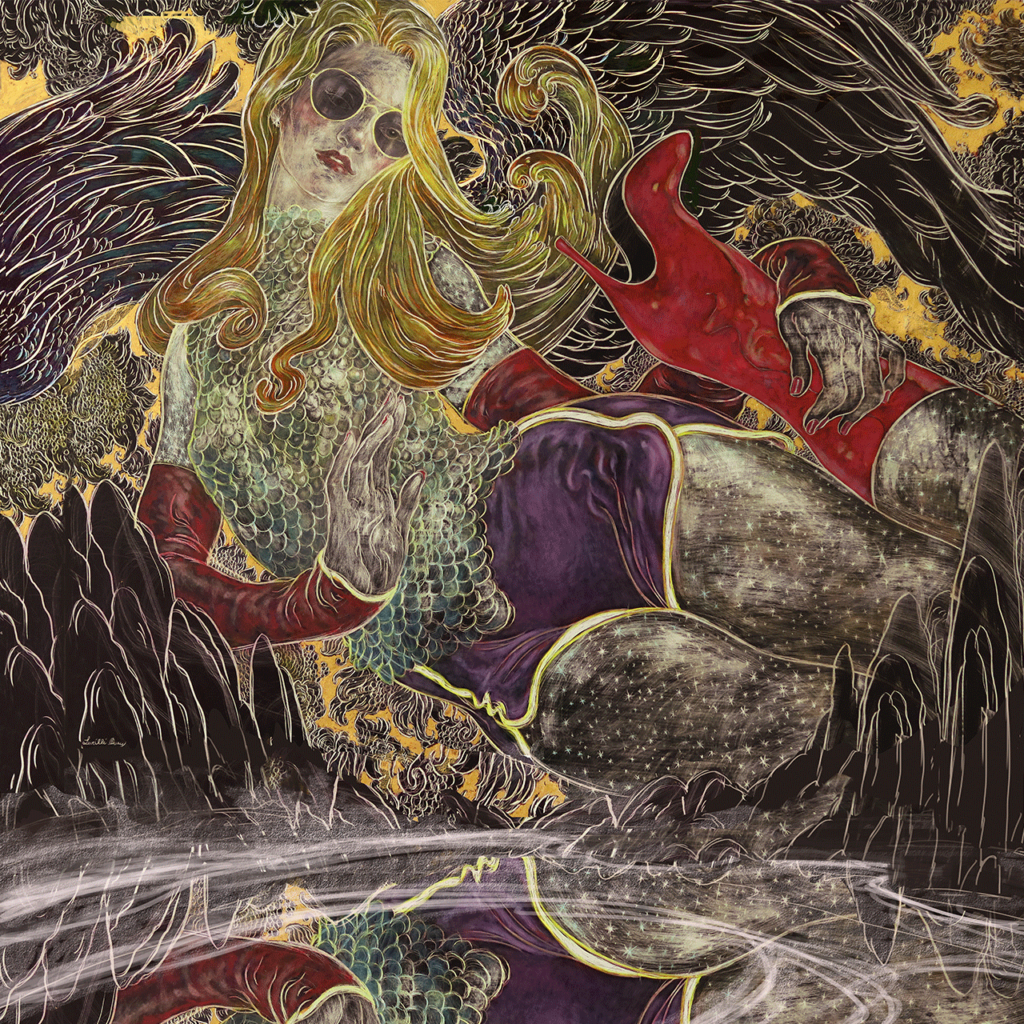
I group these two together because they tie more strongly to the contemporary style Guay has developed outside of Magic. Fashion art, stylization, and stronger linework all take center stage here. For Serra the Benevolent, the shape of the body emphasizes the importance of curves in the composition. The contrast of gold on black makes the Angel pop in spectacular ways. Some of her gallery work even uses gold leaf; I suspect the same is true here.
Meanwhile there's nothing muddled about the presentation or the poetry in Muddle the Mixture. Rebecca uses unapologetic posing and the intensity of her subject's look to stake a claim to attention in the piece and went through a lot of effort to define and vary textures with what I'm fairly certain is again oil paint. It's virtually impossible to get that kind of look with the thin paint of watercolor.
We get a hint of stars in the background to give a sense of space, but the figure sits primarily in a void. Cosmic, eternal, and, as the text bubble says, very Guay.
Stoneforge Mystic

While I've seen some spaces give pride of place to the Serra the Benevolent reprint, for me the standout is without a doubt the reinterpretation of Stoneforge Mystic. Like Cleansing Nova, Guay reframes the character rather than taking the literal approach. For me it's the strongest fusion of her classic style and her more contemporary sensibility. The unapologetic femininity is on display in the makeup and soft face of the character. Meanwhile, the heavy-lidded brows project a feeling of confidence and mystery akin to burlesque dancers.
She uses a shallow field of view, once again focused on the central character. She makes strong use of the differences in her medium. Using the opaque nature of oil instead of the translucency of watercolor, she ensures a sense of vibrancy and solidity in her work as opposed to the ephemeral feeling of her older pieces. She also highlights the silhouette of the figure, including an incredibly cocky and personality-filled hip tilt. The look and pose all speak to a combination of power, allure and challenge.
The many hands are a great way to allude to Mystic's role in the game of fetching up and wearing Equipment, and while swords wouldn't have been as fitting with the particular aesthetic, here again we get what feels like a nod to performance with the use of bladed fans, which, if you look closely you'll see are marked with the artist's other last name: Leveille.
Conclusion
Frankly, it's long overdue for me to discuss something like this here, but I'd been putting it off. I've gone on record before as saying I'm not a huge fan of Secret Lairs as a product. I'm not the audience for them, and I'm not especially fond of what they do for the game. However, they're here to stay, and they do serve an important function of allowing WotC to experiment with a wider array of artistic styles. We get to see interpretations from artists we'd never see otherwise, and I'm for allowing many different kinds of skilled artists to leave a mark on Magic. The Artist series is a prime example of what can come when WotC gives artists room to breathe and the freedom to stretch their abilities even more than they already do.
Rebecca's work isn't only brilliant and breathtaking; it also looks like no one else's. Even other artists that fill a similar niche in the game don't do it exactly like she does, and that's as it should be. Each voice is unique. As artists we're all trying to find our individual voice and answers to the questions of how we see the world. It's a rare artist who can so unapologetically answer those questions with, as Guay describes her early work, "vulnerability, romance, and love of raw sweet things."
That's all I have for you today. If you'd like to support more of my own writing and art-making, please feel free to join me on patreon if seeing an illustrator's artistic process interests you or you want to support me outside of the articles I write here. If not, just letting me know your thoughts on these and sharing is wonderful as well. I'll see you again on the next Artful Breakdown.